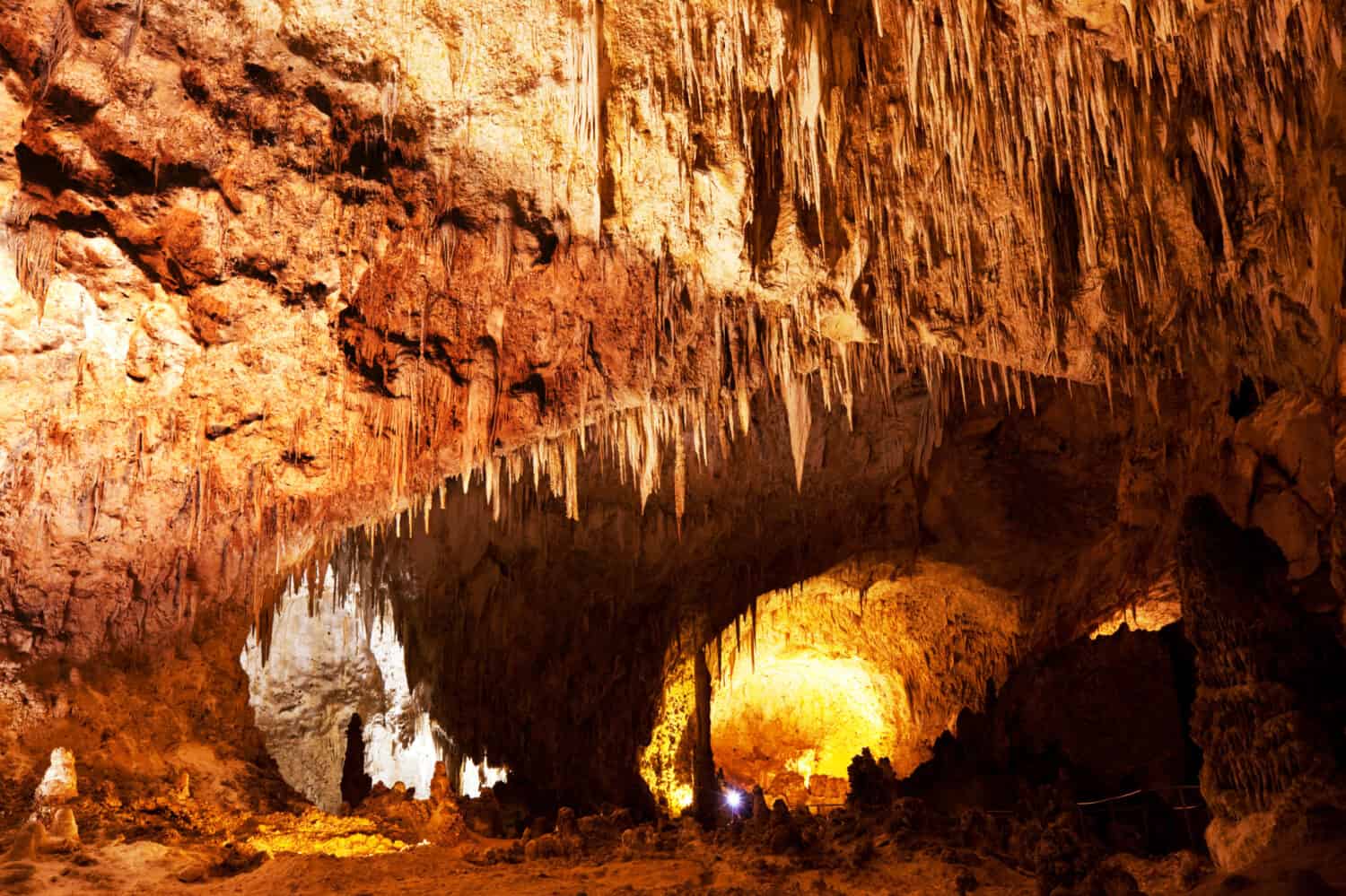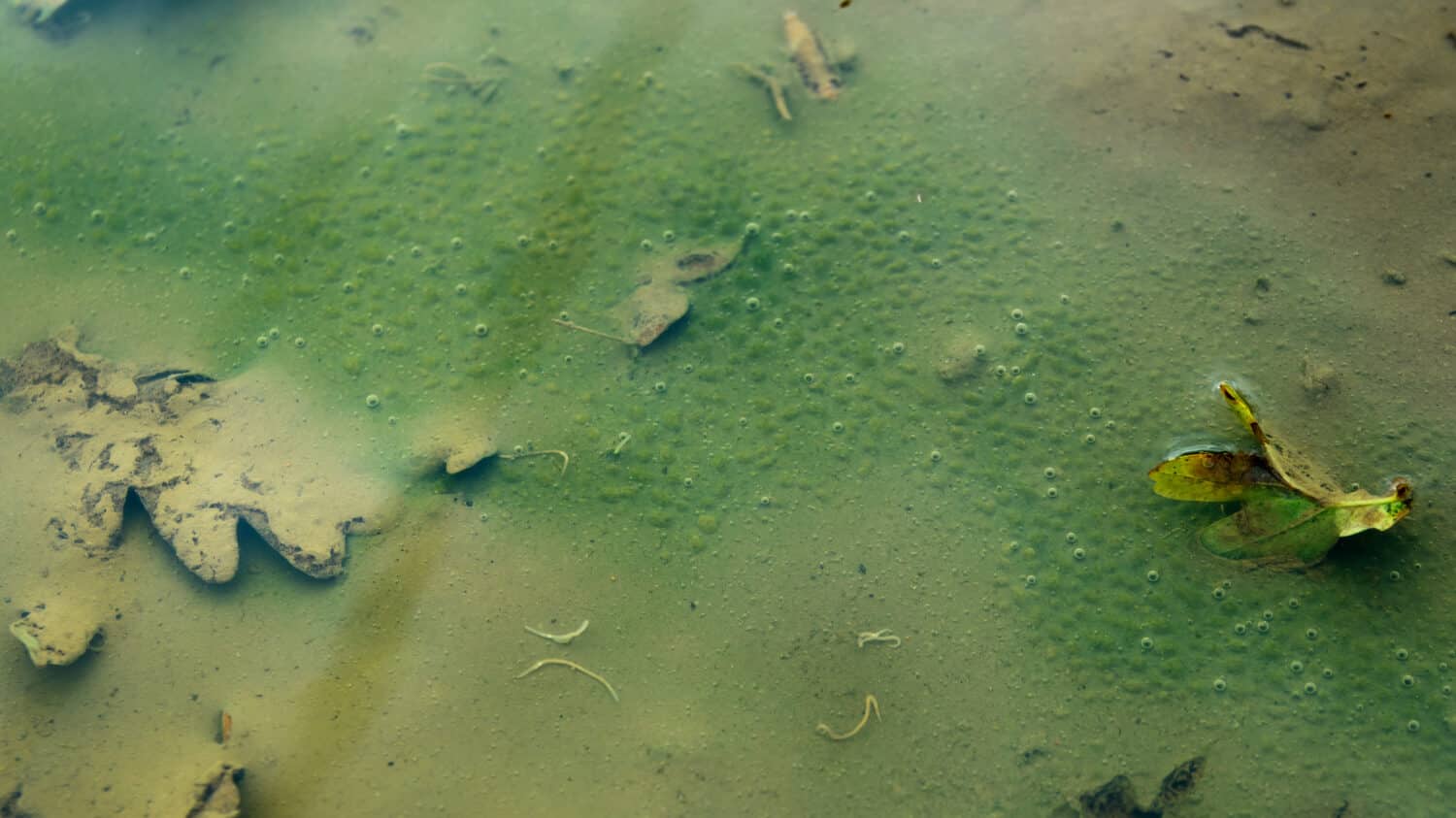Planning a trip to Carlsbad Caverns or simply interested in the incredible ecology of caves? Some folks may think of caves, especially ones situated in desert environments, as places hostile to all life. However, this framing of desert and cave environments couldn’t be further from the truth.
In this guide, we’ll specifically take a look at what lives in the Carlsbad Caverns. Read on to learn about the bats, birds, insects, and even parasitic worms that thrive in and around the caves of Carlsbad Caverns.
What are the Carlsbad Caverns?
In southeastern New Mexico, nestled among the rolling foothills of the Guadalupe Mountains, exists a mesmerizing system of over 100 caves. This extensive cavern system is the hallmark of the Carlsbad Caverns National Park and is hailed, according to the national park service, as “one of the best preserved and most accessible cave complexes in the world available for scientific study and public access”.
This stunning limestone cave system formed over 4 million years ago and is home to an incredible diversity of life from microbes to unique animal communities.
Today, the park is considered a World Heritage Site and encompasses 46,766 acres of above and below-ground areas that visitors can explore. To date, this cave system contains one of the largest chambers ever documented in North America. This chamber, known as the Big Room, currently ranks as the 5th largest in North America and measures 4,000 feet long, 625 feet wide, and 255 feet tall.

The caves of Carlsbad Caverns National Park formed over 4 million years ago.
©Galyna Andrushko/Shutterstock.com
What Lives in the Carlsbad Caverns: Animals of Carlsbad Caverns
The current checklist of animals that reside throughout the Carlsbad Caverns National Park include 67 species of mammals, 357 species of birds, 55 species of reptiles and amphibians, 5 species of fish, and at least 600 species of insects. However, only a small percentage of these animals live in or directly around the entrances of the caves. Below, we’ll talk about some of the incredible animals that call the stunning caves of Carlsbad Caverns home.
Bats
Of course, bats are one of the most commonly thought of animals when we talk about cave-dwelling critters. The Carlsbad Caverns are currently home to 17 species of bats, with the following three species being the most regularly found throughout the caverns:
- the Mexican free-tailed bats (Tadarida brasiliensis mexicana)
- the cave myotis bats (Myotis velifer)
- the fringed myotis bats (Myotis thysanodes)
What Lives in the Carlsbad Caverns: The Mexican Free-Tailed Bat
The Mexican free-tailed bat (Tadarida brasiliensis mexicana) has a native range that extends from the Southern US into South America and the Caribbean Islands. This species is so named because the lower half of its tail extends beyond the tail membrane.
This adorable bat grows to about 3.5 inches in length with a wingspan of about 11-14 inches.
As migratory animals, the Carlsbad Caverns are not the permanent residence for these bats. Rather, they are the summer home for this migratory species. The numbers that settle in this area during the summer range up to 400,000.
When at their summer residence, they tend to feed primarily on moths and beetles, although researchers have determined that they will consume insects from over 38 families and from two arachnid orders (Araneae and Acari).
These bats hunt up to about 30 miles away from their roosts in the caves. Visitors to the park during the summer can enjoy the spectacular show of Mexican free-tailed bats leaving their roosts by the hundreds at dusk to begin their night of hunting.

At dusk during the summer, visitors can watch thousands of Mexican free-tailed bats emerge from the caves and take to the skies to hunt.
©Jeff Reeves/Shutterstock.com
What Lives in the Carlsbad Caverns: Cave Swallows
Another flying animal that calls the entrance of Carlsbad Caverns home is the cave swallow (Petrochelidon fulva). These swallows are close relatives of the more commonly known cliff swallows (Petrochelidon pyrrhonota). For cave swallows, the openings of the caves are nesting areas. These birds nest and forage in colonies. As aerial hunters, they swoop through the air catching insects on the fly.
Around the entrances of the caves, these lovely little birds build cuplike nests made of mud, twigs, and seed fluff against the interior cave walls. Visitors can watch these migratory birds nesting, hunting, calling, and swooping through the air around the entrances and just past the threshold of the caves in Carlsbad Caverns National Park from early February to late October.

Young cave swallows can wait safely in their mud nests for their parents to return and provide their food.
©VITALII BORKOVSKYI/Shutterstock.com
Cave Crickets
Cave crickets, also commonly called camel crickets for their rounded backs, often live toward the entrance of caves at Carlsbad Caverns. These creepy, silent, nocturnal critters primarily feed on smaller insects, bat guano, and even each other. Currently, there are three documented species of cave crickets that call Carlsbad Caverns home:
- Ceuthophilus carlsbadensis
- Ceuthophilus longipes
- Ceuthophilus conicaudus
While these crickets give many folks (including me) the heebie-jeebies, it’s important for us humans to remember that they play a vital role in the ecosystems in which they live. At Carlsbad Caverns, bats, raccoons, and ringtails (Bassariscus astutus) feed on these creatures.

With their elongated legs and antennae, cave crickets are well-adapted for life in Carlsbad Caverns.
©Svetlana Strizhova/Shutterstock.com
What Lives in the Carlsbad Caverns: Cave Spiders
Cave spiders, especially of the Leptonetidae family, can be found inhabiting various regions of the Carlsbad Caverns. One cave of the system, in particular, is so-named “Spider Cave” for the number of cave spiders that inhabit it.
These spiders typically feature characteristics that make them well-adapted to living in the lightless environment of deep caves. Leptonetidae spiders, for example, usually have elongated front legs that enable them to better search and process their environment as they move.
Horsehair Worms
While there are cave pools at Carlsbad Caverns, they do not connect to above-ground water sources and do not support fish life. Mostly, the pools are inhabited by microbes that can thrive in the sulfur-rich environment. However, one group of macroscopic animals that you can find living in the eerie waters of the cave pools are horsehair worms.

Some species of horsehair worms, of the Nematomopha group, inhabit the sulfuric pools of Carlsbad Caverns.
©Marek Polewski/Shutterstock.com
These worms, also known as Gordian worms, belong to the group Nematomorpha. There are about 350 species of horsehair worms worldwide. Researchers have not currently described the exact species of horsehair worms that reside in Carlsbad Caverns.
Horsehair Worm Parasitism
However, we do know that the horsehair worms that reside in the cavernous pools of Carlsbad parasitize cave crickets. When cave crickets drink from the pools, horsehair worm larvae floating in the water are able to enter through the cricket’s mouth. From there, they feed on the fat stores of the cricket and grow.
Not only do these cave-dwelling parasites feed on the cave cricket from the inside, but they also control its mind. The horsehair worm is able to produce unique neurotransmitters that influence the cricket’s behavior.
See, cave crickets can’t swim, so they wouldn’t normally enter a body of water. But, horsehair worms can’t live outside of the water. So, when the larva inside the cricket has phased into its worm form, it needs the cricket to transport it back into the water.
By secreting neurotransmitters that control the cricket’s mind, thus influencing its behavior, the worm is able to compel the cricket to return to and then literally jump into the pool and drown. At this moment, the horsehair worm bores through the cricket’s body and enters the cave pool ready to reproduce. So, uh, you’re welcome for that nightmare fuel.
The photo featured at the top of this post is © Doug Meek/Shutterstock.com
Thank you for reading! Have some feedback for us? Contact the AZ Animals editorial team.






